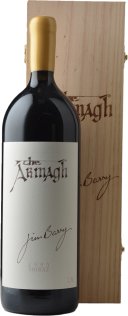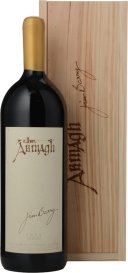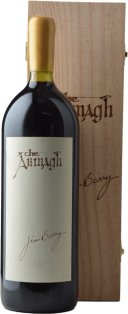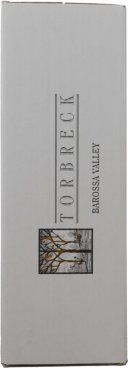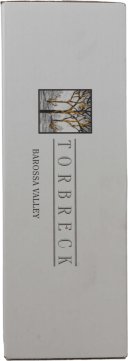Cullen Vanya Cabernet Sauvignon
Certified biodynamic, the Cullen Vanya is 97% Cabernet Sauvignon complemented by 3% Petit Verdot. Aged in new French oak of which 50% was new for a period of 19 months. Totally opaque dark red black colour with a dark red hue. Intense but beautifully refined the nose offers up aromas of blackcurrant and mulberry laced with cedar and tobacco characters followed by hints of cigar box, faint bay leaf and spice. Medium weight the palate is the perfect marriage of richness, elegance and power delivering sublime flavours of blackcurrant, ripe mulberry and dark cherries seamlessly integrated with cedar, tobacco and spice characters. Exquisite finesse with exceptionally fine grained, polished tannins. Very long after-taste of blackcurrant, ripe mulberry, cedar faint tobacco, cigar box and spice that seems to sail on forever.
Jim Barry The Armagh Shiraz
Elegant and aristocratic kaleidoscope of aromas, an abundance of fruit flavours, blackberry, mulberry and blueberry with supporting complexity of mint, eucalypt, rhubarb, Turkish delight and cinnamon. The palate offers a rich tapestry of enjoyment and fulfilment of flavours of raspberry, strawberry and boysenberry to name a few. Made by Jim Barry.
Château Canon St-Émilion
Chateau Canon shows no shy and retiring character in 2010, set to a naturally ripe and high 15% alcohol. Though power and density is a motif in 2010, there is a surprising suppleness in this wine, born from central St-Emillion vineyards and the same family of wine as Chateau Rauzan-Segla of Margaux. Almost evenly split between Merlot and Cabernet Franc usually, it''s three quarters Merlot in 2010; the wine matures in oak barrel for 18 months, with around 70% of those offering new wood character. While dense and compact, there is a succulence to the wine that suggests cellaring to two decades would be apt.
Ornellaia Bolgheri Superiore
Bolgheri Superiore is the Italian winery, Ornellaia's flagship wine which gives rich fruit on the nose and crispy oak. The palate is lively and powerful which full, concentrated fruit flavours and impressive silky, smooth tannins leading to an elegant yet spicy, long finish.
Vieux-Chateau-Certan
Domaine Confuron Cotetidot Charmes Chambertin Grand Cru
The Domaine is one of the best in Burgundy, crafting old school Burgundies with long maceration time and almost 2 years in barrels
Château Cos D'Estournel St-Estèphe
In the upper echelon of 2nd Growth estates, Chateau Cos D''Estournel is located in St-Estephe appelltion, on the fringe of Paulliac and notably just north of the famed Lafite vineyards. Tourists flock to the Medoc estate to see the unusual, Asian-inspired Chateau design, but the wines hold their own and rightfully are considered the finest within St-Estephe. Oak is set to around 80% new barrels while alcohol is a modest 14.5%; the blend in 2010 is 78% Cabernet Sauvignon with 19% Merlot and complimentary Cabernet Franc and Petit Verdot in tow. A wine for thirty or so years.
Laurent Ponsot Corton Charlemagne Cuvée du Kalimeris Grand Cru
Laurent Ponsots new company is a stage in a wide-ranging project that began four decades ago. In this different format, Laurent Ponsot continues to use his experience, his craftsmanship and his passion to serve the terroir of Burgundy. The company Laurent Ponsot is neither a domain nor a maison: its a state of mind. To create an exceptional wine is the equivalent of designing luxury goods. Haute couture is how we have decided to describe these incredible wines, like unique designer pieces, made even more glorious through our experience and craftsmanship. In 775 Emperor Charlemagne donated this vineyard to a Catholic institution in Saulieu, which kept it for the next 1000 years! Laurent Ponsot SAS sources its grapes from these three villages via six different producers, making a wine representative of the appellation whose richness is derived from its diversity. The wines are finely chiselled, precise, and rich with the scent of flowers and minerals. Match with fish, shellfish or a cheese platter to perfectly showcase their qualities.
Torbreck RunRig Shiraz
The flagship of the Torbreck stable. Recently been elevated to 'Exceptional' status in Langton's Fine Wine Classification, it is a wine of utmost power and density. Famous for rich concentration and opulent power, this exceptional Australian Shiraz is as popular abroad as it is at home. Definitely one to place in the cellar and simply forget about - let the patience reward you over 10 or more years time.
Chateau Petit Mouton
"Cabernet Sauvignon 77%, Merlot 19.5%, Cabernet Franc 3%, and Petit Verdot 0.5% This is Jean-Emmanuel Danjoy’s first solo vintage here after Philippe Dhalluin’s retirement. The proportion of Cabernet Sauvignon is up again; there’s more of an architectural feel than usual. The grand vin had a much stricter selection, so some of its historic parcels are now in this blend. This feels very Cabernet-driven, with notes of lead pencil contributing to a sturdy, spicy bouquet. The tannins are certainly ripe, adding a sense of restraint. This will become quite an interesting wine, presenting a different facet than usual, although it’s not one to be kept very long-term."





















